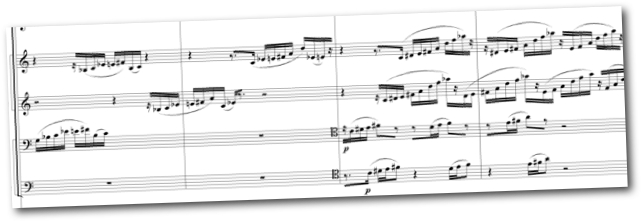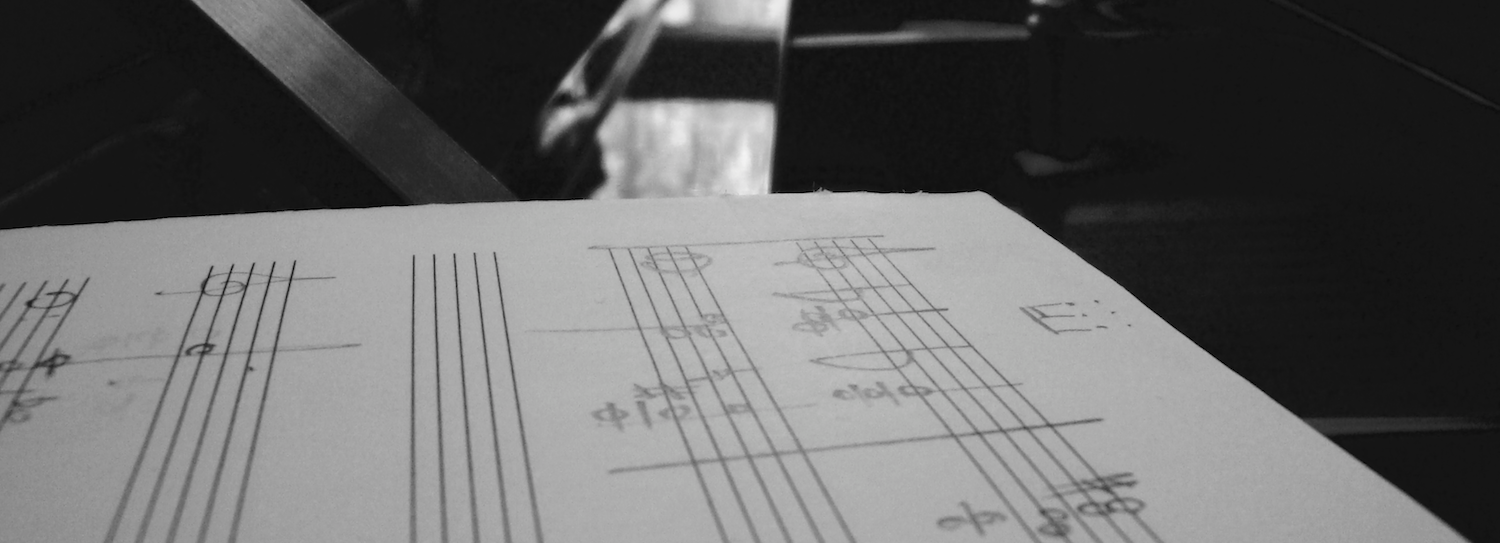Multiple Choice for Winds (2003)
Commissioned by John Hsu and the Cornell Symphony Orchestra. Premiered in February 2004 by the winds of the Cornell Symphony Orchestra, Diego Vega, conductor.

- a. Pastorale
- b. Passacaglia
- c. Chorale
- d. None of the above
(notes compiled by Balázs Mikusi)
This piece was commissioned by John Hsu and the Cornell Symphony Orchestra and was premiered in February 2004, conducted by the composer himself. Diego Vega has said the following about his work:
“The title Multiple Choice came from a fellow graduate composer at Cornell, Tom Schneller. I had all four movements virtually finished, but could not find a cogent title for the last. For a while I contemplated calling it “Fanfare,” but not even that seemed to really work, so finally I decided to simply label it “None of the above.” When Tom saw this, he immediately suggested to name the whole work Multiple Choice, as if the four movements were four possible answers to an imaginary question.
“The first movement starts off as a Pastorale of the woodwinds indeed, although it gets stormy very soon, with the entrance of the brass. The only clear-cut melody appears in the middle section on the piccolo and the oboe, the recapitulation that follows is strongly varied. Throughout this movement I used techniques characteristic of Lutoslawski’s music, thus the piece is a kind of experiment on my part.
“The repeated bass pattern of the Passacaglia, played by the bassoon at the beginning, comes from Benjamin Britten’s opera, Peter Grimes. To this, I added a counter theme, which first appears in the English horn, imitated (in canon) by the French horn. After the climax of the movement, this counter theme recurs in slower tempo, fragmented into smaller chunks.
“The opening of the third movement, although I use a melody of my own, strives to evoke the solemn atmosphere of a real chorale. Inspired by Ives’s Unanswered Question, I first use the woodwinds and the brass section in alternation, and they converge only gradually. The middle section provides strong contrast with its contrapuntal writing and fast rhythm; the latter goes on for a while even during the recapitulation of the chorale.
“The last movement opens with a fanfare, which, however, is a mere introduction (or, on its later returns, interruption) of the main musical material. This I conceived similarly to a Bach invention: the slower subject is coupled with a counter subject moving in fast sixteenth notes. The subject itself is identical to the counter theme of the Passacaglia and, like that, it later reappears in slower note values too. This thematic connection forges a link between the second and the fourth movements; while the first and the third are related in their harmonic technique.”

Instrumentation: picc – 2 fl – 2 ob – eng. hn – 2 cl – 2 bssn – 4 hn – 2 tpt – 2 tbn – tuba
Duration: 12 min.
